Persevering Through Doubt
A homily on finding the courage to remember, you are as strong as you think
Today’s post is the second of two Homilies I’ve delivered this year as a lay preacher at St. John’s, the Episcopal Church in New Milford, CT (read the first, here). It responds to today’s Lectionary, selected readings from the Old Testament, the Psalms, the New Testament, and the Gospel. Today’s readings, referenced in the homily, can be found here.
People exist on a wide spectrum of faith in the divine, and those who don’t regularly participate in organized religion may resist today’s many mentions of “God” and “Jesus.” Please know that I hold space with a loving heart for all the names we use for the divine spirit working within and among us. I am grateful for the example of Nadia Bolz-Weber who is one of the best at navigating the space between doubt and faith.
Today, I’d like to talk about doubt.
Doubt is an invitation.
It asks us to lean in, squint our eyes, and look closer.
Doubt is the birthplace of miracle, a word that in Latin means, “object of wonder.”
Sitting around after the tragic and gruesome death of their friend and fearless leader, Thomas is the only one of the disciples courageous enough to say what we have to imagine many of them were thinking.
“Jesus, is that really you?”
This passage of scripture, which we consider each Eastertide, is a clear reminder that, in the course of a faithful life, every one of us will inevitably find ourselves in a moment of doubt.
For those who missed my Lenten homily about walking the Camino, here's some backstory.
Three years ago, I walked the Camino Frances, the 500 mile pilgrimage route from the southwest of France to the northwest of Spain.
When I started that journey on, March 20, 2022, I was 29 weeks pregnant with my son Felix.
In November of 2021, at just two months pregnant, I decided to make the journey the following spring, and I immediately started training, to prepare myself for the 12 to 17 mile days I knew lay ahead. (While walking the Camino during Lent was an incredible spiritual decision, training walks in Connecticut in December, January and February were not for the faint of heart.)
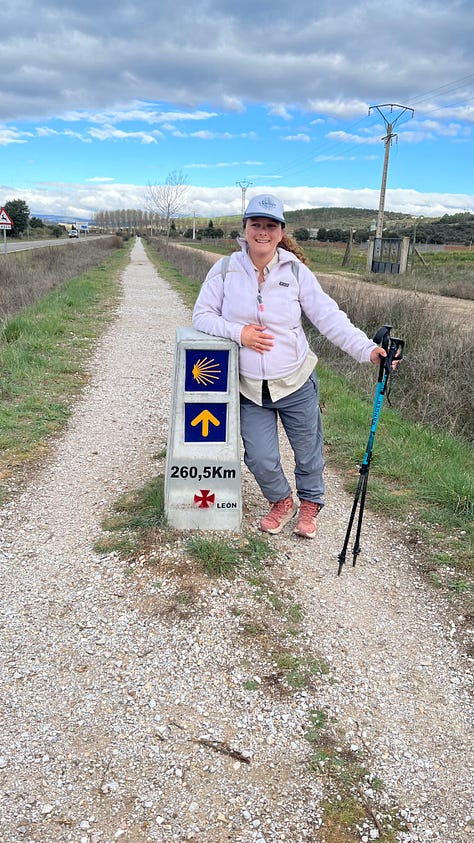
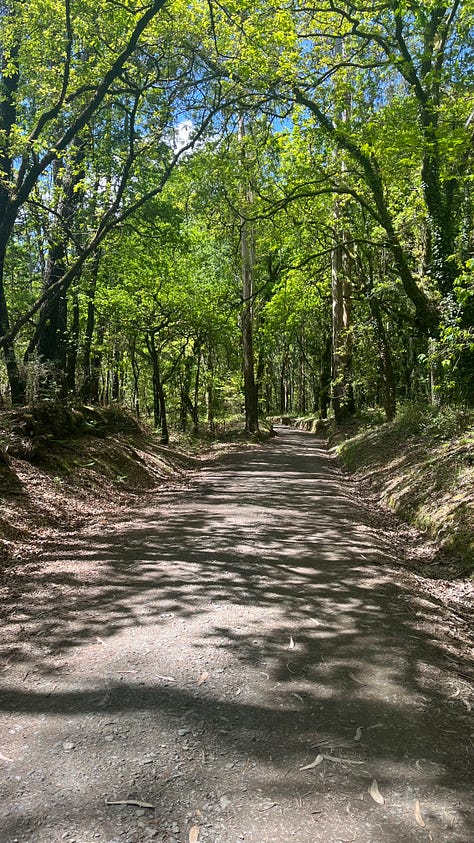
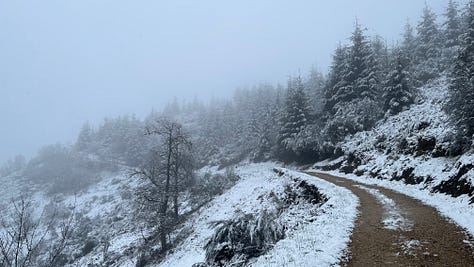
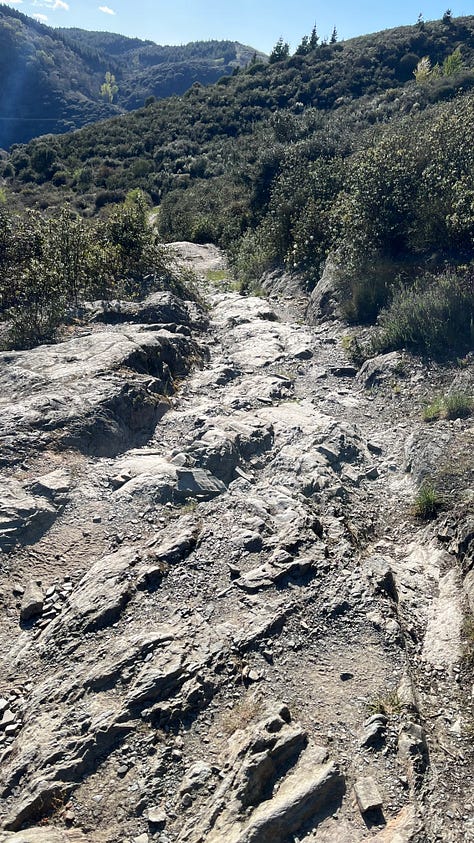
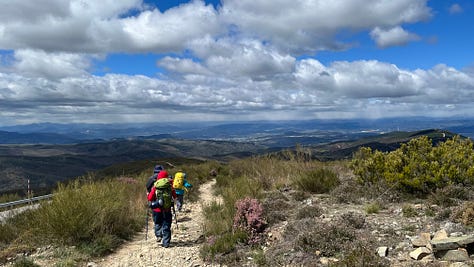

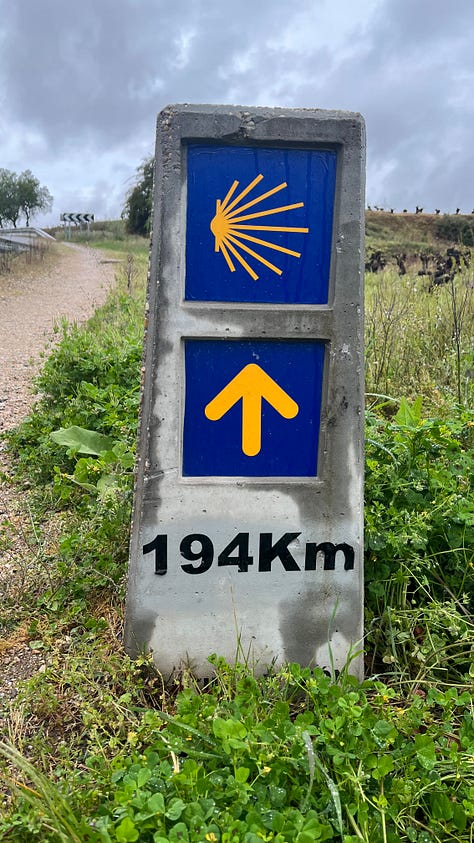
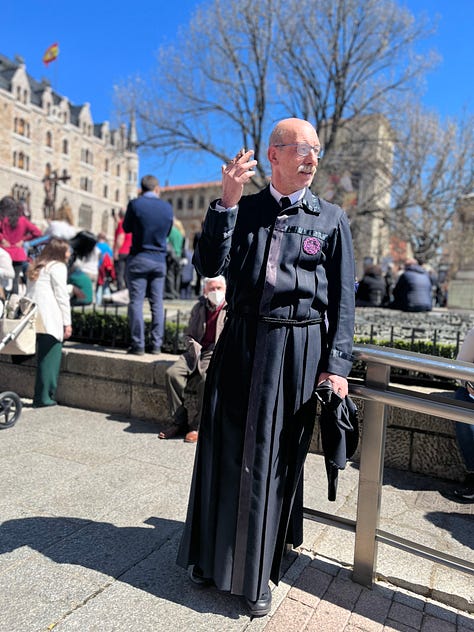
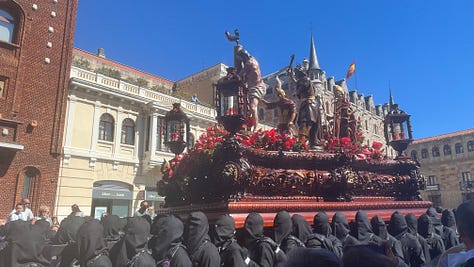
Many people imagine the Camino to be a European version of the Appalachian Trail, but it’s more of a long chain of cattle paths, pastoral byways, and old Roman roads through beautiful rural towns and villages than a trek through the wilderness. In late March and April, there is still some risk of snow (which I encountered) but for the most part, the countryside is alive with the glorious flora of spring along with the whinnies of newborn foals and the bleating of baby lambs. With the exception of a few long desolate stretches of five to seven miles in the middle of the Spanish meseta, it’s rare to walk more than two to three miles without encountering a cafe or restaurant along the route.
Even still, as soon as I’d made my decision to make the journey, the questions and concerns started flooding in.
“You’re doing what? Where? WHEN?”
Even the people who had the decency to keep their mouths shut had a hard time controlling their eyebrows. The idea that a woman in her third trimester of pregnancy would spend six weeks an ocean away from her OB-GYN, not to mention her family, to say nothing of the 12-miles-a-day of walking I would need to average to arrive at my destination on time—it was all so unthinkable for so many of my family and friends.
My mother offered the best summary of these feelings:
“Well, I think it’s a bad decision, and you’re probably going to regret it. But you get to make your own choices,” she said.
Maybe it’s my bull-headed nature, maybe it was the divine direction I so clearly felt, but the more doubt I faced, the clearer my conviction became. My body was strong. My pregnancy was healthy. I am fluent in Spanish. Even if I did go into labor on a Spanish hillside somewhere, I felt confident about my ability to safely find my way to a hospital before active labor.
Twenty six days into a forty-two day journey, I walked into Lyon, a mid-sized city of about a hundred thousand people just past the Camino’s halfway point. It was Santo Viernes – Holy Friday, and I had heard from other pilgrims that I should expect to see a public demonstration of faith.
Most of the businesses of the city were shuttered, but the people of Lyon thronged the streets to participate in their annual ritual of Catholic remembrance. Men dressed in full length black cassocks, wearing masks that covered their entire face carried life-sized carvings of the stations of the Cross through the city streets as crowds gathered to watch.
Imagine the energy of the Macy’s Day parade, but instead of a Mickey Mouse float, Jesus being interrogated by Pilate, and carrying the cross.
Between each station of the Cross were local marching bands playing dirges and women dressed in formal mourning attire.
I’d gotten used to being in motion, but standing around aimlessly proved more difficult. After standing for more than an hour watching several stations of the Cross roll by, I finally pulled back from the crowd to find a place to get something to eat. But I was left profoundly moved by the social significance of this annual ritual.
Holding a public funeral for Jesus every year is one way to ensure the community retains a shared understanding of Christ’s sacrifice and love. It’s also a good way to contend with any doubt that may surround the events of his death and resurrection.
It’s nearly impossible not to feel something when faced with a life-sized statue of Jesus carrying the Cross on which he’ll be crucified, surrounded by dirges and weeping women.
But at the pinnacle of Holy Week, any one of us is the most Christian we’ll ever be. What happens when Easter is over?
After 88 years of life, Pope Francis chose the hours after Easter to leave this world for the next. Watching the public celebration of his funeral recalled for me the Holy Friday procession and the social benefit of public mourning. Remembering the contributions of his papacy this week felt like an invitation to deepen my own commitment to Christ.
When the Holy Friday public processions had ended, I boarded a city bus out of town towards my hostel, a few miles outside the city center. Technically I should have walked those five miles, but it had been a long day of standing around in the sun. I was tired, and paying less than two euros for five miles I didn’t have to walk on a cement sidewalk alongside a two-lane highway felt like an appropriate allowance. I was 33 weeks pregnant and I hadn’t yet passed the Cruz de Fierro, the highest point of the Camino, with two weeks of lots of uphill walking still ahead.
Now, it was time for me to contend with my own doubt.
Whereas most pilgrims find the last leg of the journey to be the easiest, I always knew the last 100 miles of the journey would be the hardest for me because I was only getting more pregnant. While my body had grown considerably stronger after four weeks of walking, the baby I was carrying had also increased in size by about 60 percent. My circulation was getting worse and my ligament laxity had noticeably increased. I couldn’t walk more than a half a mile without my feet starting to hurt, needing to sit down and elevate my feet.
Like walking the Labyrinth, sometimes the only thing to do is to keep putting one foot in front of the other, to just keep going, and trust that your faith in yourself will guide you through.
The mantra I kept repeating to myself over and over was: “You are as strong as you think,” my adaptation of the famous Henry Ford quote, “Whether you think you can or you think you can’t, you’re right.”
As I tried to find the strength to finish the journey, I often thought of Jesus and the 40 days he spent in the wilderness contending with the Devil. While the Camino is not a nutritive fast, especially for a 30-some-week pregnant person, it is an experiential one. It is a time warp experience that forces the body, mind, and spirit out of its established habits into an extended state of social deprivation that creates space for all manner of thoughts and feelings, both good and bad, to percolate.
It still brings tears to my eyes to remember what it felt like to feel the man I love, the father of my child, who I had not seen in more than six weeks, wrap me in his arms, to breathe in his smell, to feel the warmth of his chest against my face, to feel so fully and physically loved.
I hold these two things together at the same time: the profound, extended solitude and loneliness of the Camino and the joy of it being over. The vacuum of human connection it created allowed me to feel things that had been obscured by the busyness of daily life. The heightened experience of love that rushed in to fill that vacuum upon greeting my husband reminded me why we spend our lives with people we love.
“Blessed are those who have not seen and yet have come to believe,” Jesus says, an admonition that we cannot afford to wait for proof before exercising our faith.
We cannot let doubt push us away from ourselves or each other. We have to receive any inkling of doubt as an invitation to lean in with faith.
And this is the virtuous cycle of the body of Christ as we know it today.
Each one of us is a vessel of Christ’s love that when we draw close, grows full.
When each of us carries an overflowing vessel of love, we are more fully equipped to contend with our own doubts and to help our fellow humans navigate theirs.
Over the last year, my family and I have wrestled our share of demons.
In the span of eight months, I had a miscarriage, lost my job, and stood by while my father-in-law, one of the kindest and most devout Christians I have ever known, mysteriously grew sick and died.
I share this, not to seek your sympathy, but because so often, unless we choose to disclose it, what we are each carrying is hidden from view.
In a time of growing social isolation, it can sometimes feel easier to grin and bear it, to give the impression that everything is fine, rather than wearing your heart on your sleeve.
“As the Father has sent me, so I send you,” Jesus says.
It’s easy to read this invitation as meant for someone else—send who, exactly?
But it’s pretty clear he’s talking to all of us.
In our darkest moments of greatest struggle, we have to find the strength—the faith—to be in it, together.
We are living through a moment of social transformation, one of great trial and great change, perhaps not unlike the period in which Jesus and his disciples were alive.
When faced with the failure of leaders and institutions, it’s easy to lean back, roll your eyes, and be satisfied that your doubts have been realized, there’s nothing more you can do.
But the moment when everything seems like it might be falling apart is exactly the time when we have to lean in and love each other harder. It’s not enough to just believe. We have to take that belief and alchemize it into a transference of love—to our family, our church, our work, our community, and even the people we would love to hate. Social solidarity is the only real antidote to institutional failure. We have to find the strength and conviction to show up for one another in profound and durable ways.
As your newly elected Clerk, I’m seeking to put this conviction into action, to find ways to help us see each other more clearly and find deeper connection as a result. But, like many people in the so-called Sandwich Generation, I’m logistically constrained by the demands of life, work, and family. So I’m asking all of you to help me by leaning in, too. If you are also feeling a desire to feel more deeply connected with others in our church community, to share more of yourself more often, I hope you’ll find a way to let me know. Find me in church, send me a text, give me a call, send me an email. Carrier pigeons welcome. I’d love to hear what you’re struggling through, and what you’re dreaming about, so that we can make this community an object of wonder, where miracles happen.
Together, I hope that we can find the courage to hear the call, to more deeply love one another as Christ loved us.
Amen.
Where are you finding community and connection in your life? I’d love to hear about it.





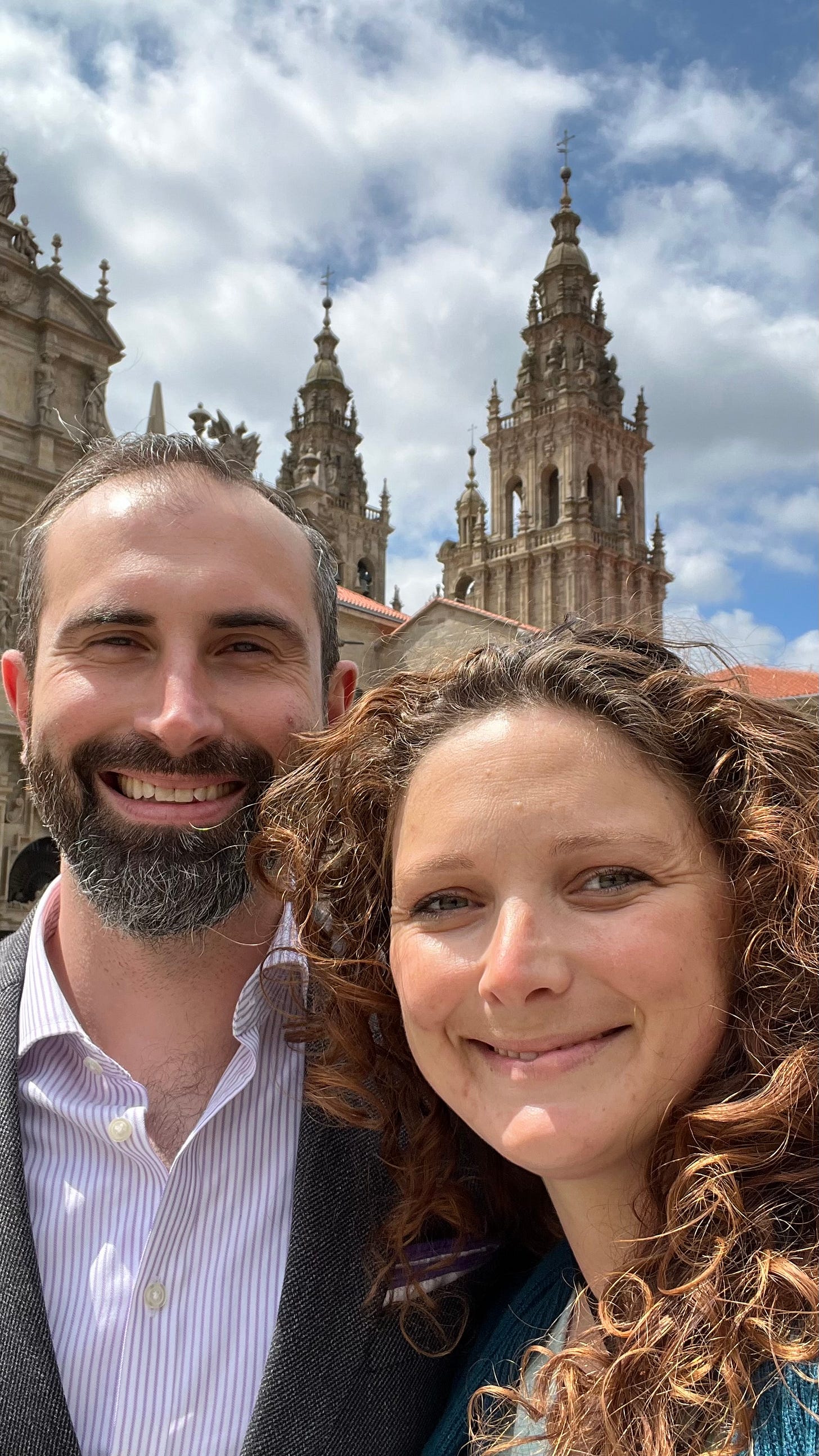
Thank you. You’ve woven a complex fabric of thought and feeling here. I’m inspired.